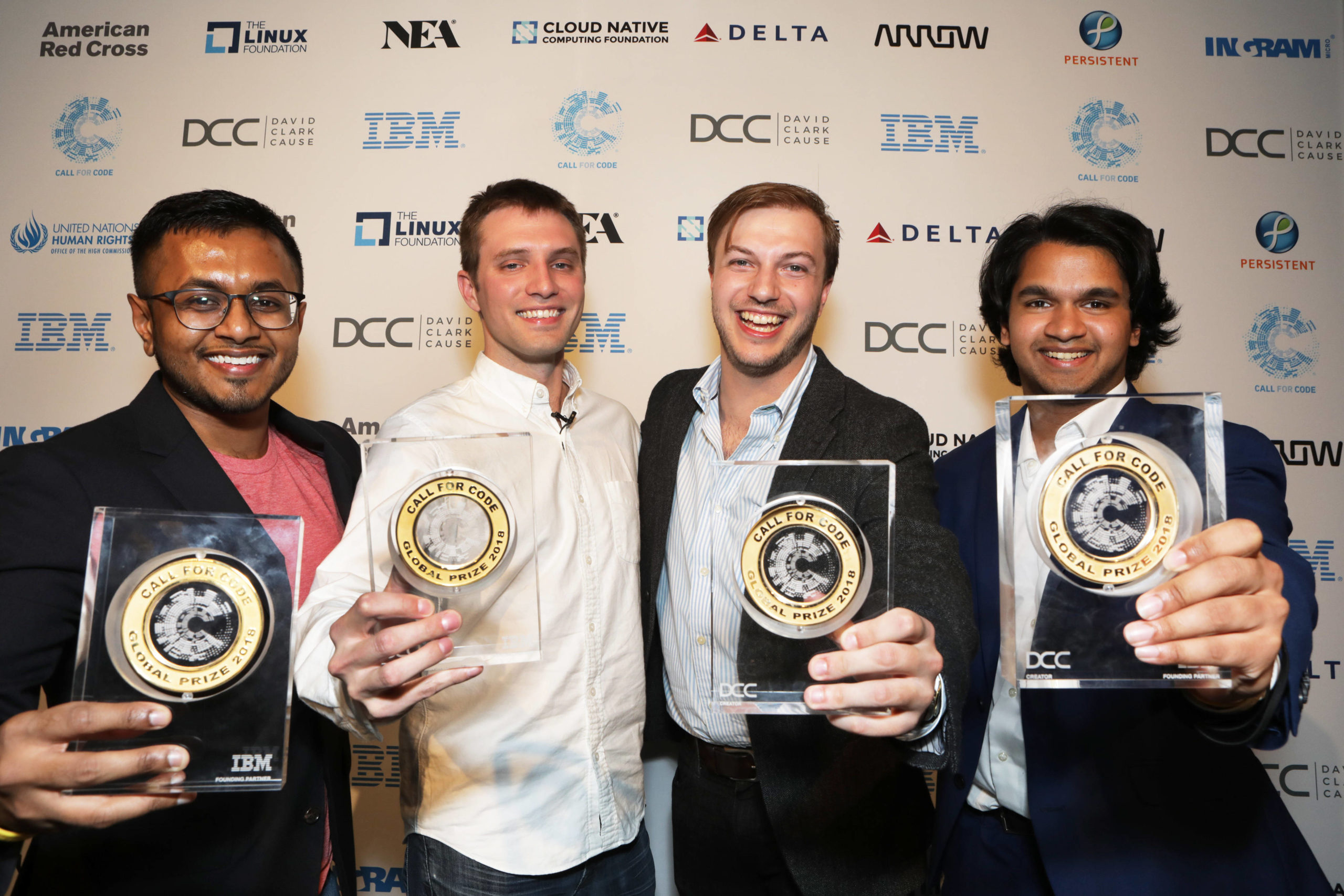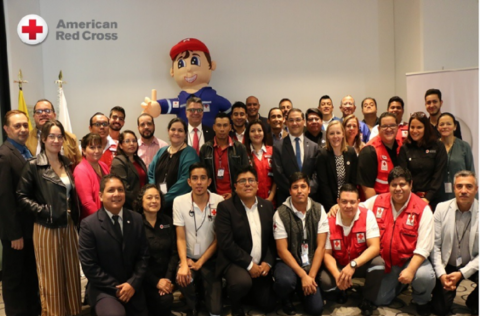Image credits: IBM Call for Code, 2018.
An OWL has brought together a cluster of ducklings and their mother to quickly form ad hoc communications networks to better help coordinate relief efforts in the aftermath of natural disasters like hurricanes, floods or earthquakes.
Project OWL – Organization, Whereabouts, and Logistics – is the brain child of a team of software developers who won a $200,000 prize, as well as the opportunity for worldwide implementation through the IBM Call for Code competition.
It is a hardware/software solution that provides an offline communication infrastructure that gives first responders a simple interface to manage all aspects of a disaster. The contest drew more than 100,000 developers from 156 countries. A panel of judges including former President Bill Clinton selected Project OWL from a field of five finalists.
The ducklings are internet-emitting floating buoys that can be airdropped into disaster areas to instantly provide as large a communications network as the situation demands. An interlinked “clusterduck” network can provide telecommunications to replace cellular, landline and internet connections lost due to infrastructure damage and power cuts.
“It allows you to better prioritize delivery of medical supplies and water or also medical attention,” says Angel Diaz, IBM’s vice president of developer technology and open source. “In addition to the cash prize, the concept will be adopted by IBM’s Corporate Service Corps, which works with nonprofits, social enterprises and governments on ways to improve the world.”
Each “duckling” device is a small, durable, waterproof, hexagonal rubber ball that houses a mini-WiFi relay. With a range of about 400 meters, their signals would overlap and connect to a “mother duck,” which in turn would tie the coverage together to create a mobile network.
Characteristics:
- These buoys are transmitters that use longe-range, low-power frequencies often incorporated into Internet of Things devices.
- The devices cost an estimated USD$38 per buoy. Only five are needed to cover a square mile. The team calculated that a 124 square kilometer (77 square mile) metropolitan area the size of San Juan, Puerto Rico, could be covered by less than 100 buoys for about USD$12,000, according to ReliefWeb.
- Smartphone and laptop users would receive a popup when they join the network that would allow them to report their location, condition, and survival needs to rescue workers.
- The OWL software can be used separately as an incident management system. First responders could use the application to set up and coordinate incident zones to access FEMA, Red Cross, even crowd sourced user data. Users can text or call the OWL management system using conventional systems like Alexa and Facebook Messenger, as well as type into it directly from a computer or phone.
The Project Owl team of developers – Charlie Evans, Taraqur Rahman, Nick Feuer, Bryan Knouse and Magus Pereira – live in different parts of the US and met on the Slack channel IBM set up for the contest. The idea for the project hardware originated with Pereira, who recently graduated from East Carolina University in Greenville, North Carolina.
“Since I’m in the Carolinas, we get a ton of hurricanes. A few years ago we had a hackathon to come up with a solution to help the community, Pereira shared on an interview for
Wired. “For some reason I was just thinking about communication and I had buoys in mind.”
Periera created the “clusterduck” and the team created the software platform that allows civilians to communicate with first responders in real time.
The concept has been tested with EMS and government responders in simulated situations. The team plans to roll out to small incidents before deploying in large disasters, such as a hurricane. They will focus on regions where hurricanes, typhoons and cyclones impact communities regularly, such as India, China, the Philippines and parts of the U.S. The ducks could be deployed when a disaster occurs and the network could be turned on and work off the grid using solar panels and battery packs.
Lessons Learned :
Supporting Materials :




